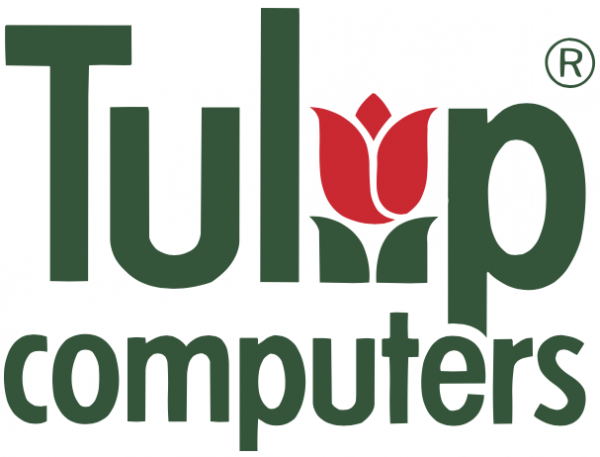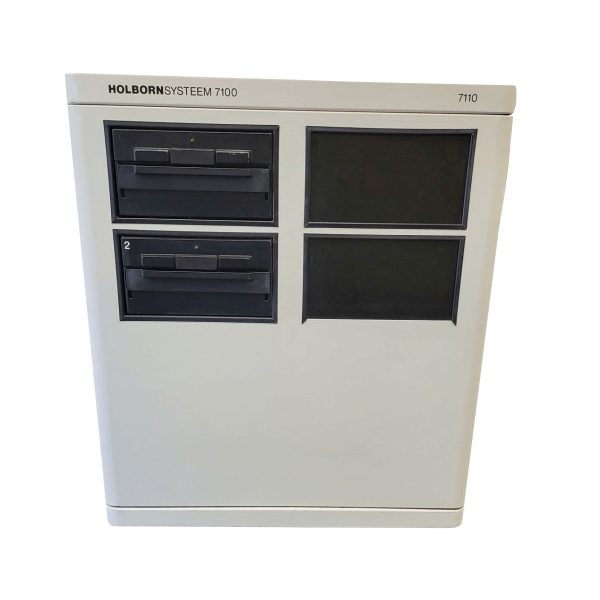Holborn 6500 gedetailleerde breakdown
The Holborn 6500 was developed in late 1982, and it was the last model Holborn worked on. Currently, we only know of 3 of these models existing.
This machine was equipped with ‘mini’ floppy drives, the well-known 5.25-inch drives. What’s interesting is that the 80-track floppies were actually formatted with only 77 tracks. This happened because they followed exactly the same digital format as that of the Holborn 6100’s 8-inch drives.
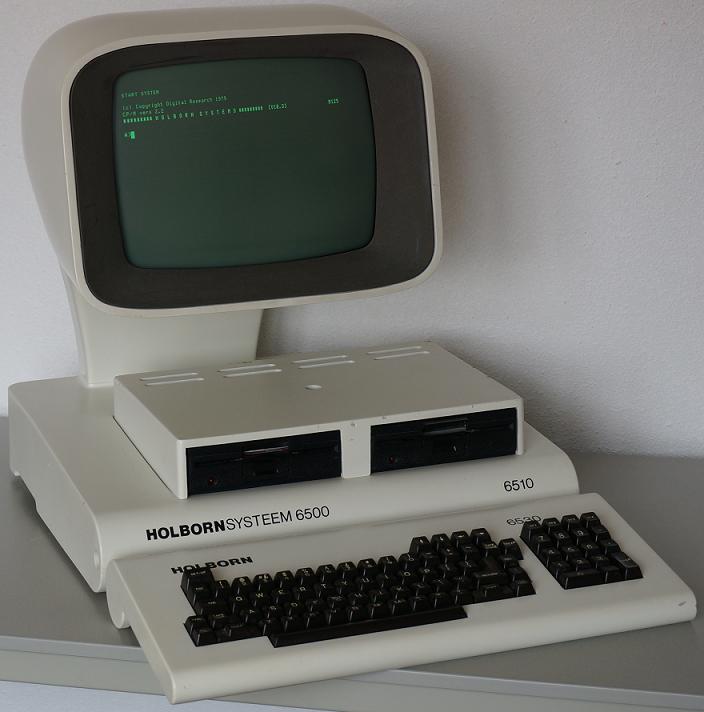
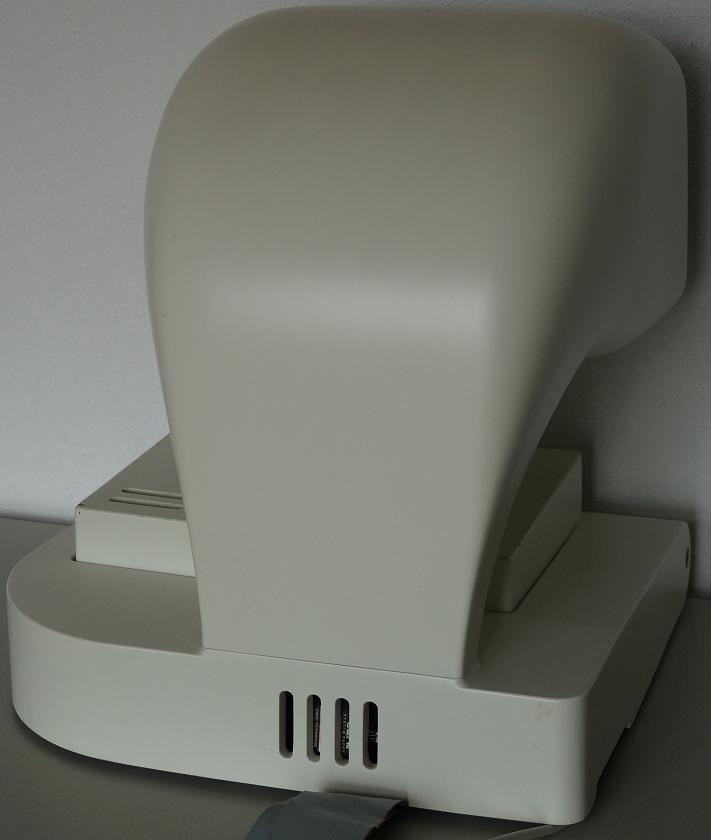
This is the back of the Holborn 6500. Unlike the 6100, this one has a fan on the backside. This fan was necessary due to the limited space inside the machine. Everything is built very compactly to optimize performance and increase internal memory.
It’s interesting to see how the bottom of the Holborn 6500 shares similarities with that of the 6100. However, it has been shortened because the machine is less deep, due to the external keyboard. The hole for the fan of the 6100 is covered with a plate, as the fan is now placed at the back.
A detail that stands out are the tiewrap holders that serve as legs for the computer. Another detail is the unplaced 9-pin D-connector, which was probably left out because it didn’t fit with the cover on. This may have been due to the fact that the light pen (for which the plug was intended) was not supported under CP/M.
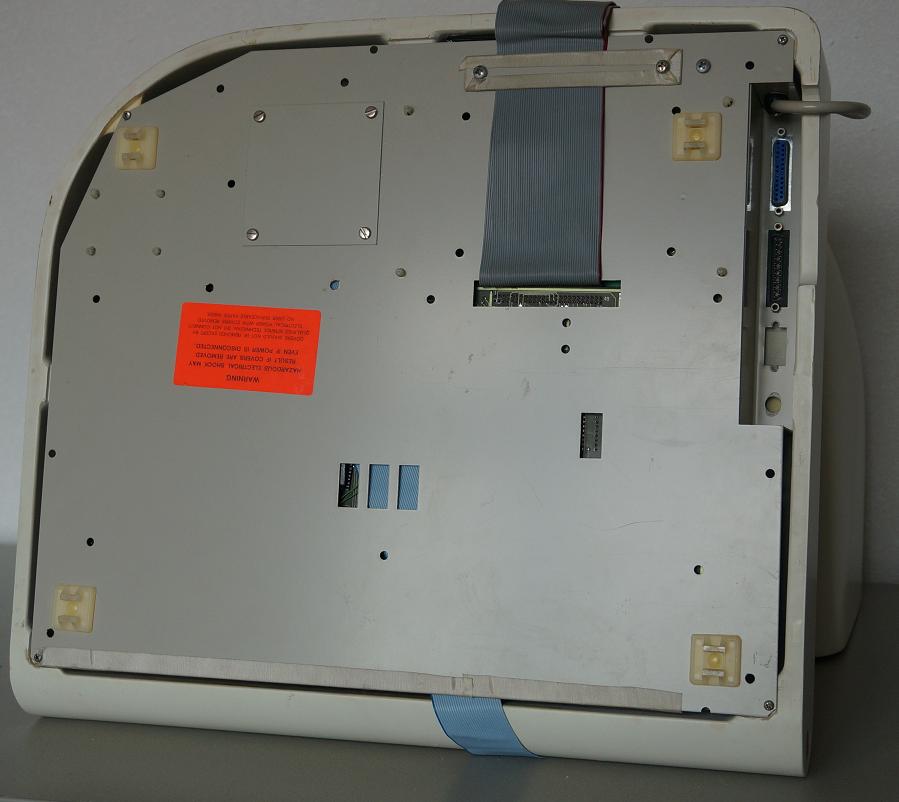
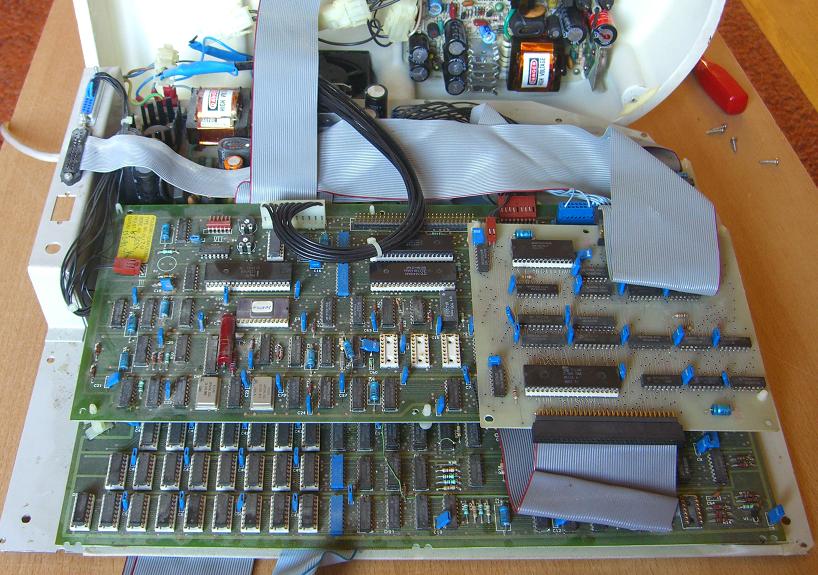
The Holborn 6500 is quite packed with electronics. At the bottom is the Z80 motherboard. On top of that is the terminal board. The hard disk interface is located on the corner of the terminal board.
The power supply for the computer is located on the left side at the back, while the power supply for the floppy drives is located on the right side of the housing. This compact layout ensured that all necessary components fit in the housing and the Holborn 6500 could function properly.
Interesting to see that a fan has been placed under the floppy drives to improve cooling. However, it appears that no dust filter was used, which is indeed strange considering the risk of dust accumulation in the case. It is clearly visible that the cabinet has been cut to size.
This machine belonged to a hardware developer of Holborn and was one of the prototypes.
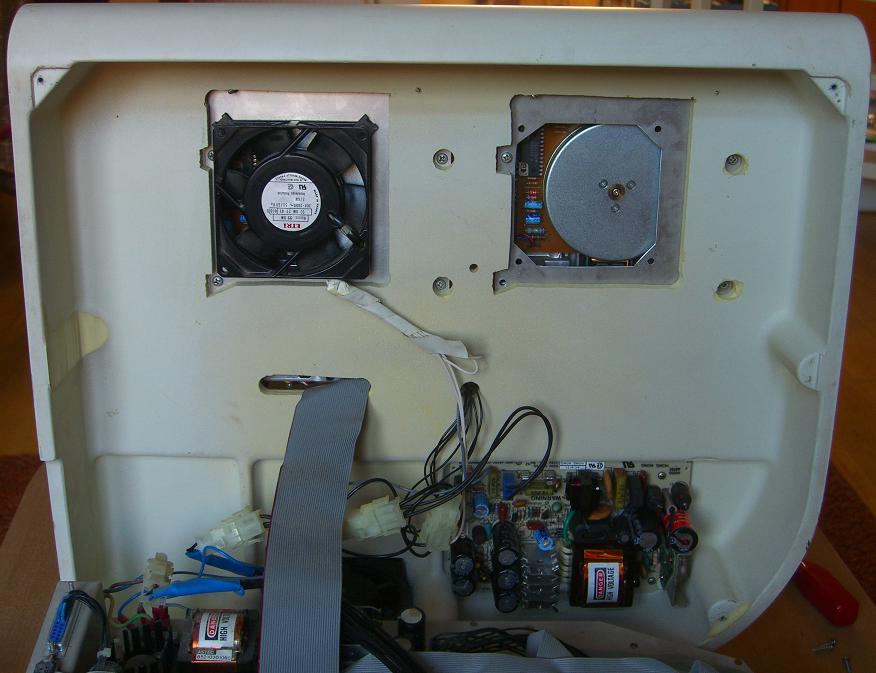
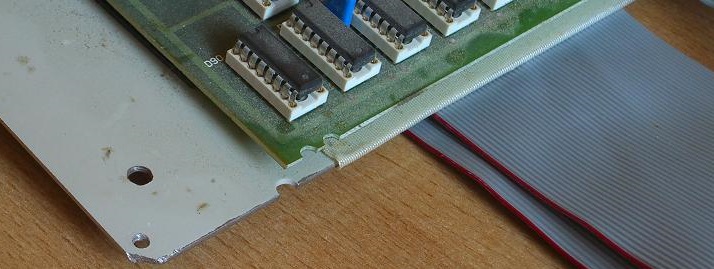
Clearly visible manual work to get the base plate to size.
It is clear that customization was the norm in those years. The photo shows the power supply unit for the floppy drives. What is particularly striking about the machine is the lack of attention to safety and electromagnetic compatibility (EMC). The data cables simply run along the power supply boards without any form of shielding.
It is likely that a lot has changed since then in terms of safety standards and EMC guidelines. Even at that time, such practices would likely not meet the standards now maintained. It’s interesting to see how standards and practices in the electronics industry have evolved over the years.
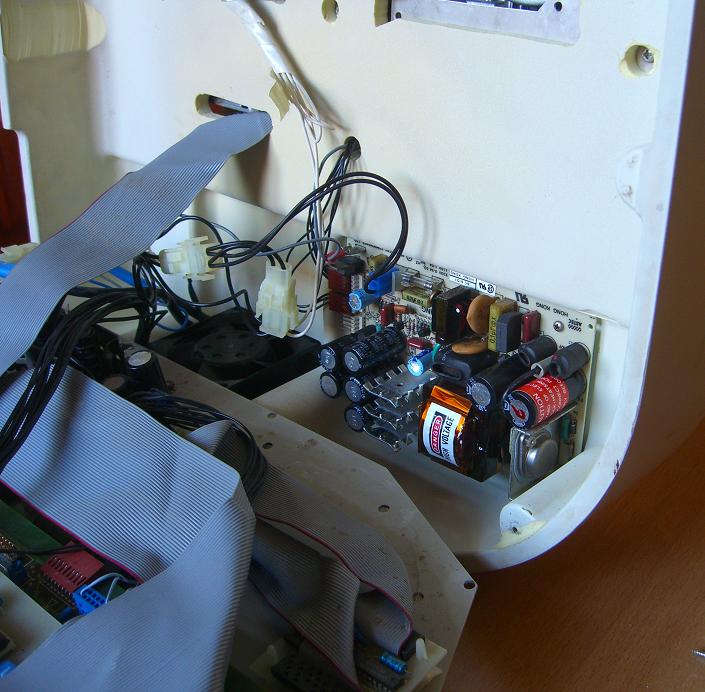
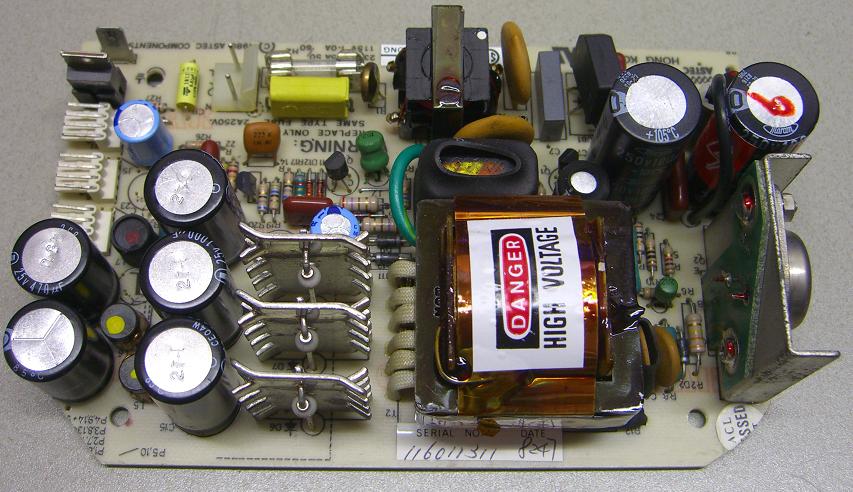
It is clear that the power supply board for the floppy drives is custom made to fit into the case. Here there is also no shielding whatsoever here.
Regarding the transistor on the metal plate on the right, it is concerning that this transistor appears to handle the dangerous mains voltage without proper protection. This lack of safety and shielding is indicative of how standards for electrical and electronic equipment have improved over the years to protect users from potential hazards. It also emphasizes the importance of safety considerations in the development of electronic equipment.
It is not unusual for the Rifa mains filter capacitors in old computers to need to be replaced over time. The fact that this capacitor has already failed at the developer emphasizes this point. Electronic components have a lifespan, and as time passes they can degrade or malfunction, leading to malfunctions in the system’s operation.
Replacing outdated or defective parts is an important aspect of maintaining old computers and electronic equipment to keep them in good condition and functioning properly.
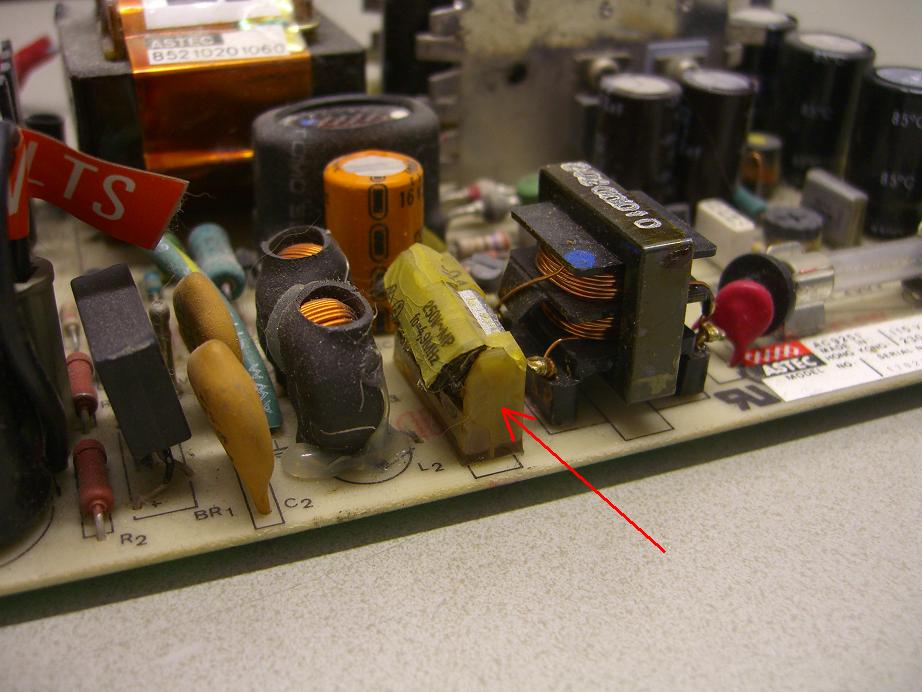
The Holborn 6500 motherboard appears to be identical to that of the 6100. Interestingly, the 5.25-inch floppy interface was already present on the 6100 motherboards. In this particular case, the 8-inch floppy tape cable has been routed outwards. This could possibly have been for development purposes, as the 6500 did not support using all three floppy drives simultaneously (2 internal and 1 external). It indicates that there may have been some flexibility built into the hardware to support different configurations.
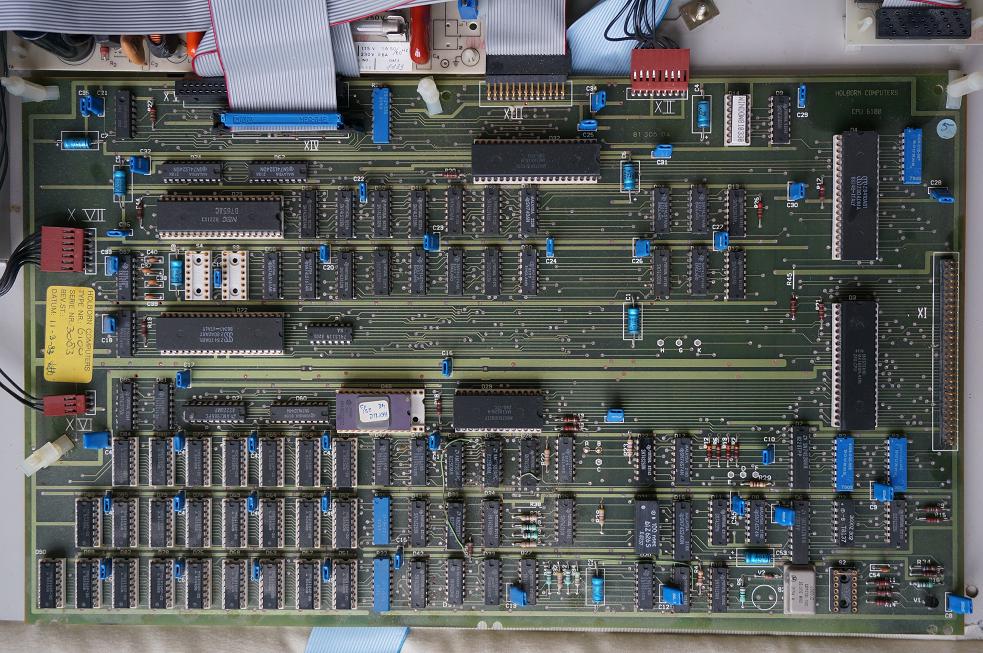
The Holborn 6500 terminal board also appears to be identical to that of the 6100, indicating consistency in design and possible component reuse between both models. This can offer advantages in terms of cost savings and efficiency, both for production and maintenance of these systems.
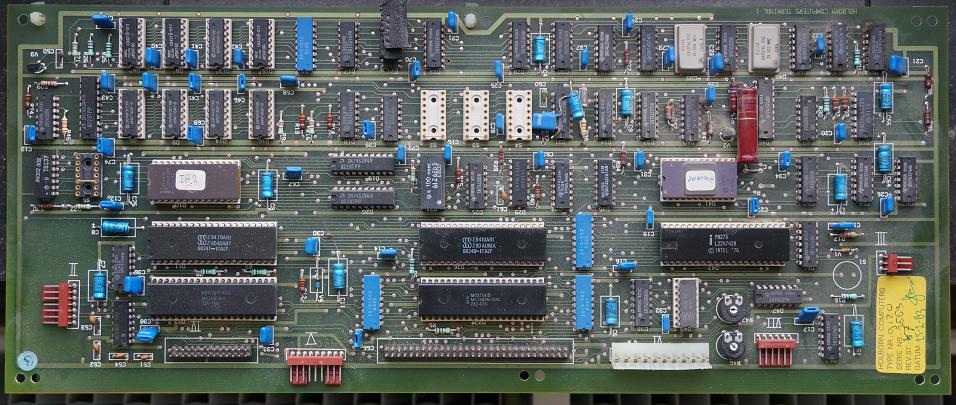
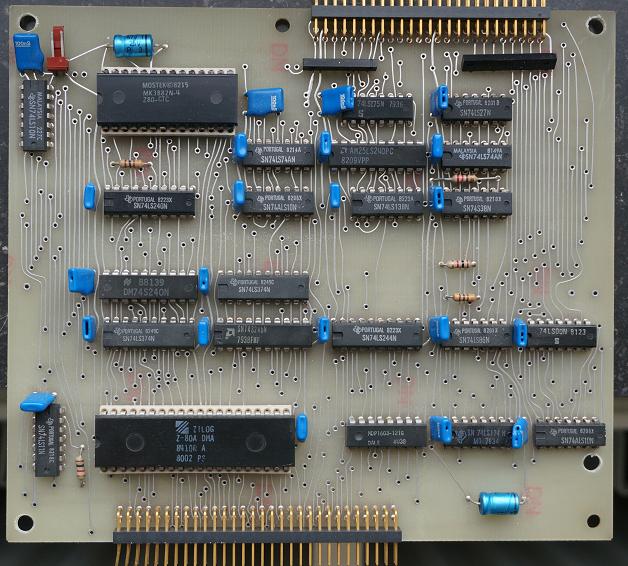
This concerns the HDI-2 hard disk interface for the external Xebec S1410 SASI to MFM controller. It is noteworthy that the HDI-1 hard disk interface of the 6100 has undergone some adjustments, which have already been incorporated into the circuit board in this copy. Nevertheless, the technical specifications of the printed circuit boards are identical.
Interesting to know that the electronics of the screen are incorporated in the head of the computer and that it is a purchased part. Indeed, removing the picture tube from the device can be challenging due to the complexity of the process. This emphasizes the delicate nature of disassembling and maintaining old computer systems.
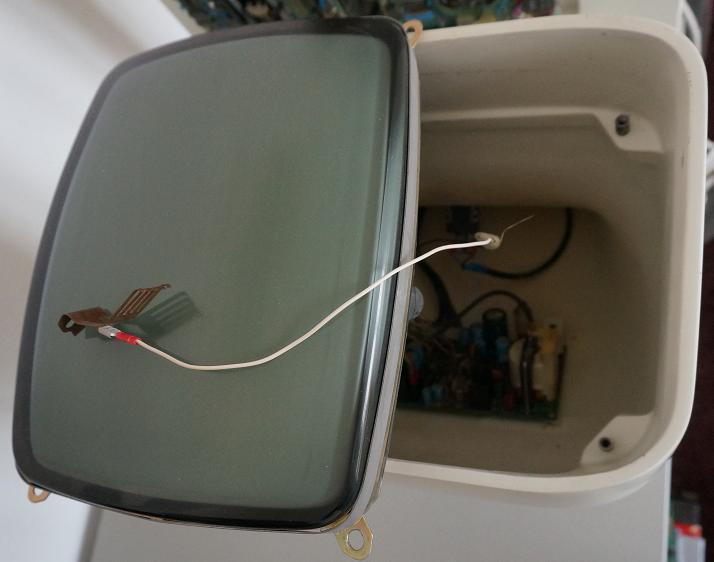
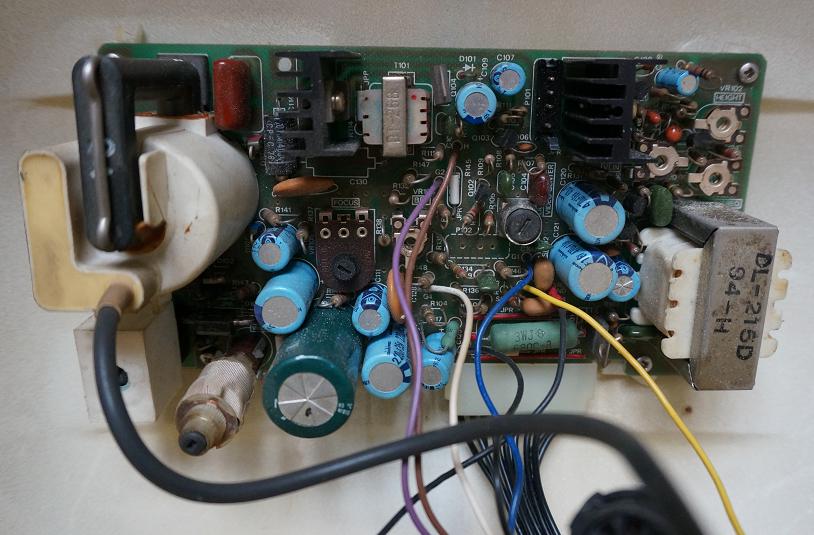
All screen settings are fixed on the PCB itself, with no user adjustment options on the computer, such as synchronization, contrast or brightness.
Indeed, the fact that the display circuit board is located in the neck of the monitor assembly can pose a challenge for repairs. Removing the picture tube to gain proper access adds additional complexity to the maintenance process. This highlights the technical challenges associated with repairing older computer hardware, especially if it was not designed with easy access to internal components in mind.
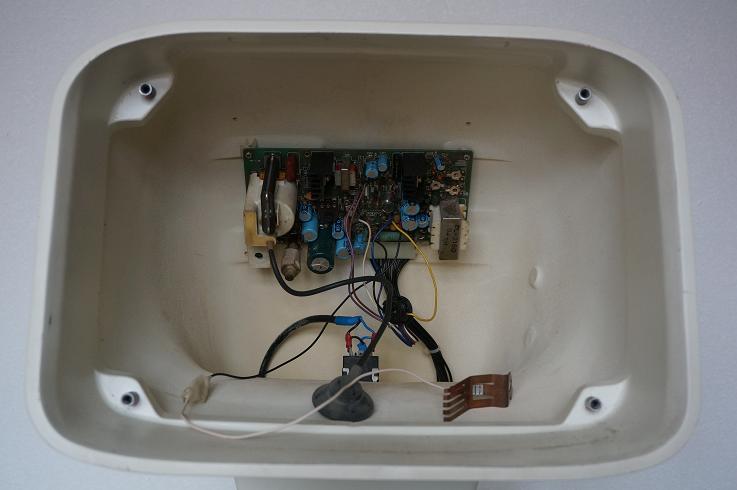
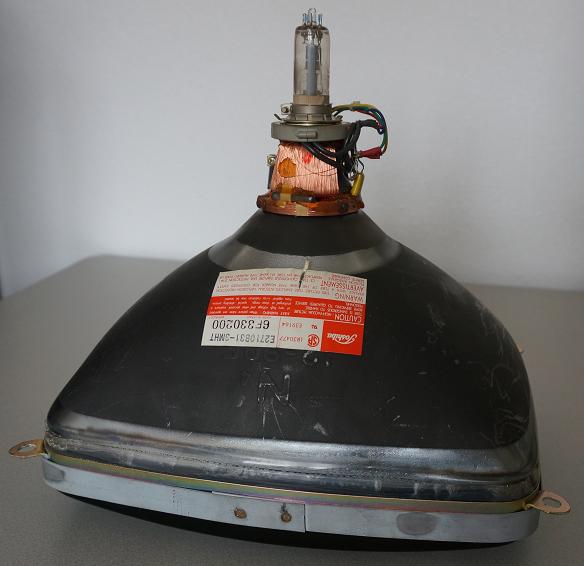
The Toshiba CRT.
The design of the Holborn 6500 keyboard bears strong similarities to an Apple keyboard, which is interesting considering Apple’s reputation for design-oriented equipment.
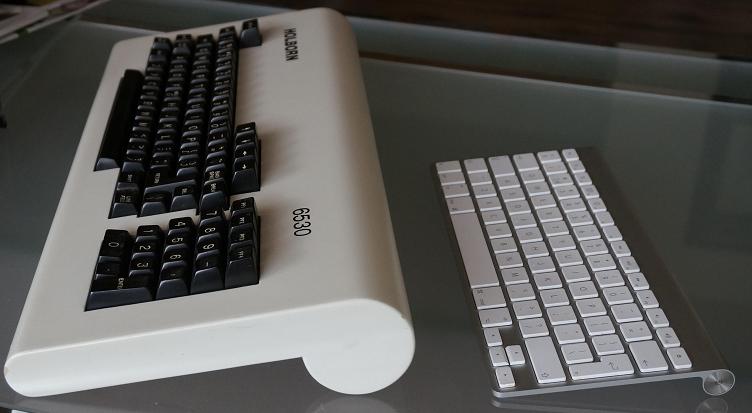
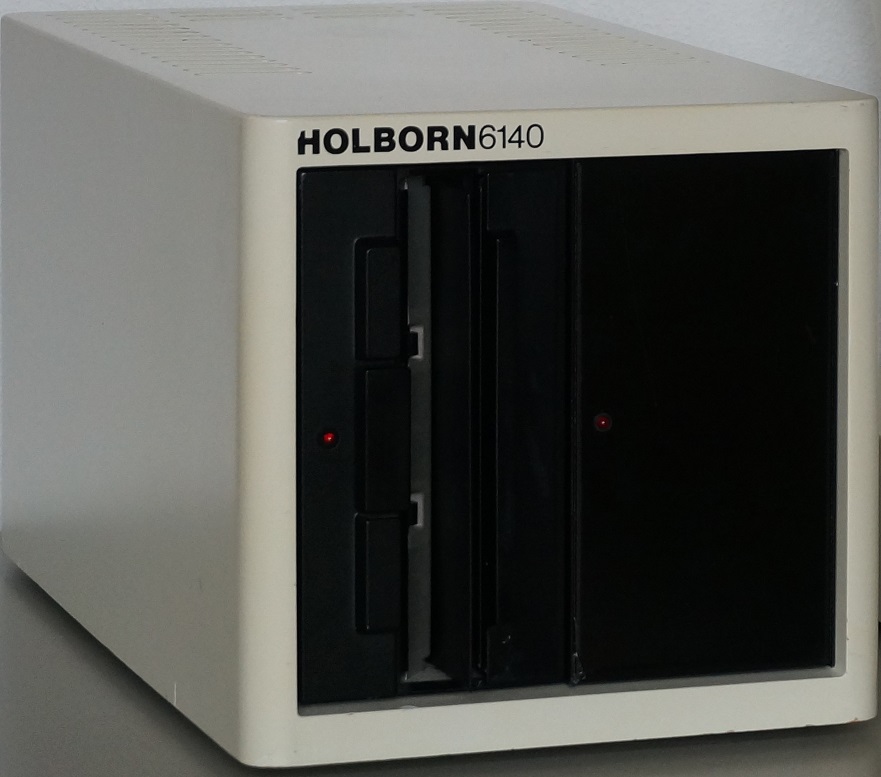
The Holborn 6500 is equipped with a SASI hard drive interface, the cable of which, like that of the 8-inch floppy drive, is routed outside. It is possible to connect a 6140 disk unit, similar to that of the 6100.
However, it appears that such an external unit is not included with the 6500. While the 8-inch floppy drive may not be an expected option for the 6500, an external hard drive could be. For now, another universal external hard drive appears to have been used, containing a Xebec S1410 SASI controller.
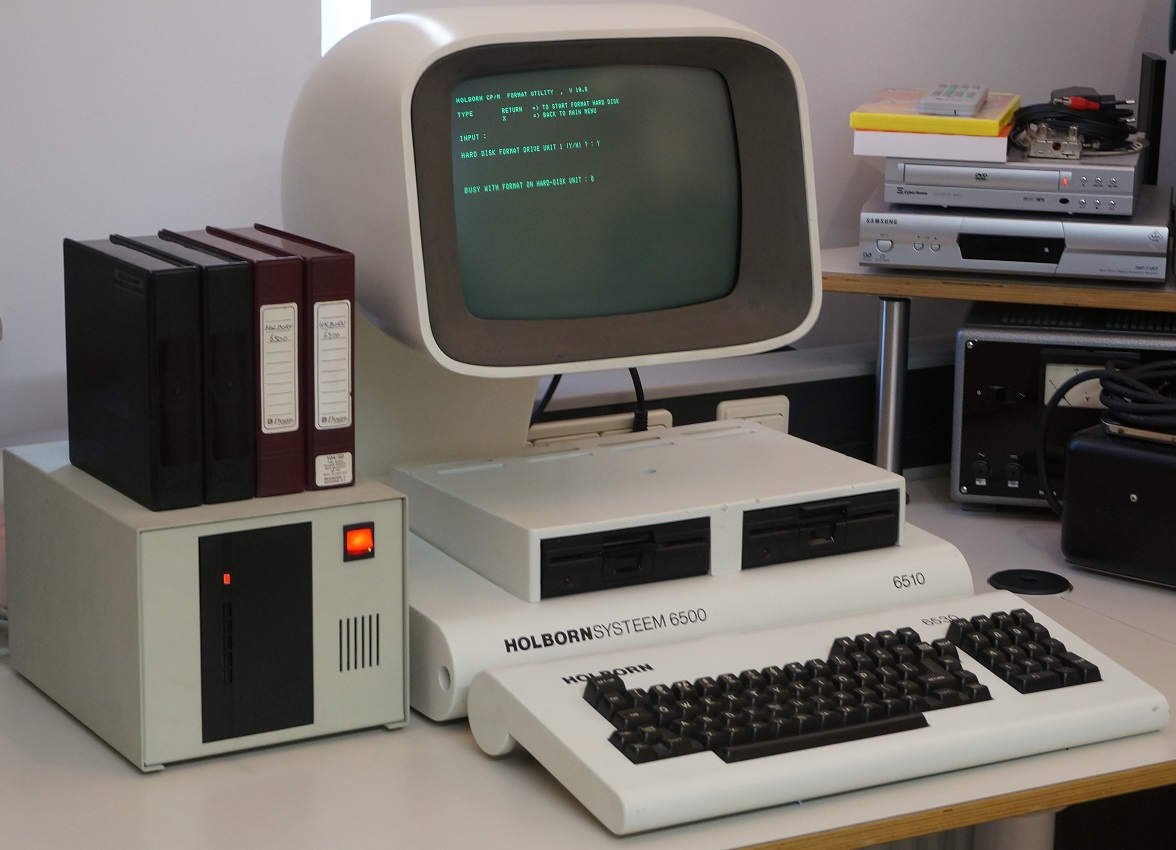
Above you can see the 6500 with the replacement hard disk unit.
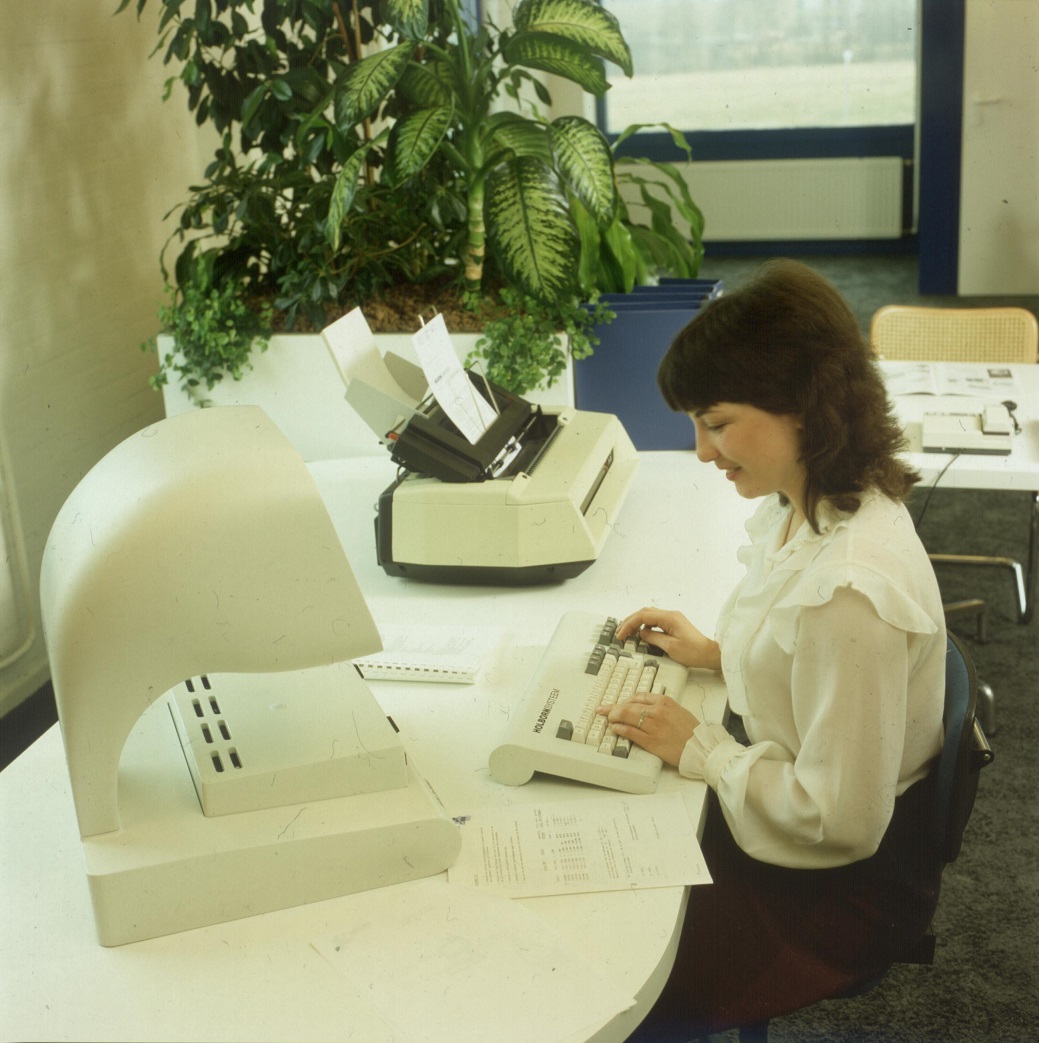
It is interesting to see color slides created for the Holborn 6500 leaflets, even if the final leaflets themselves were in grayscale. The photos appear to have been taken in Holborn’s working environment with employees.
It appears that the systems depicted may not have been fully operational yet. For example, there is a flat cable missing between the keyboard and the system, and there is no cable recess on the bottom left side. In addition, the machine stands directly on the desk without legs. This may indicate the stage of development of the units or prototypes shown.
It is striking to see that there are photos of the 9120 terminals hanging on the wall in the background of this picture. This gives an interesting context to the image and shows how these terminals were used in the Holborn working environment. It appears that these slides provide a valuable historical look at the times and the technologies that were developed and used at the time.
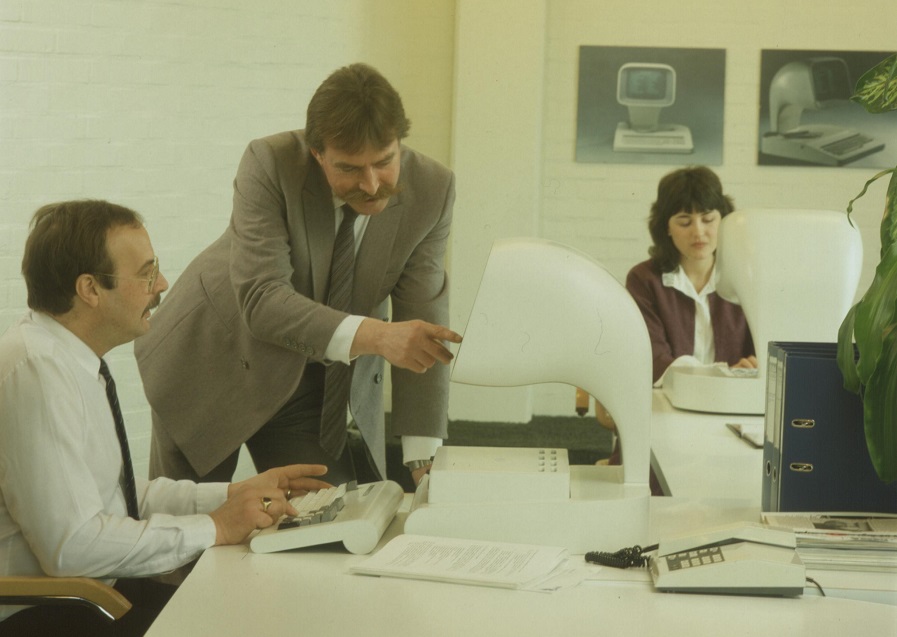
Many thanks to technischmuseum.nl for this information.



